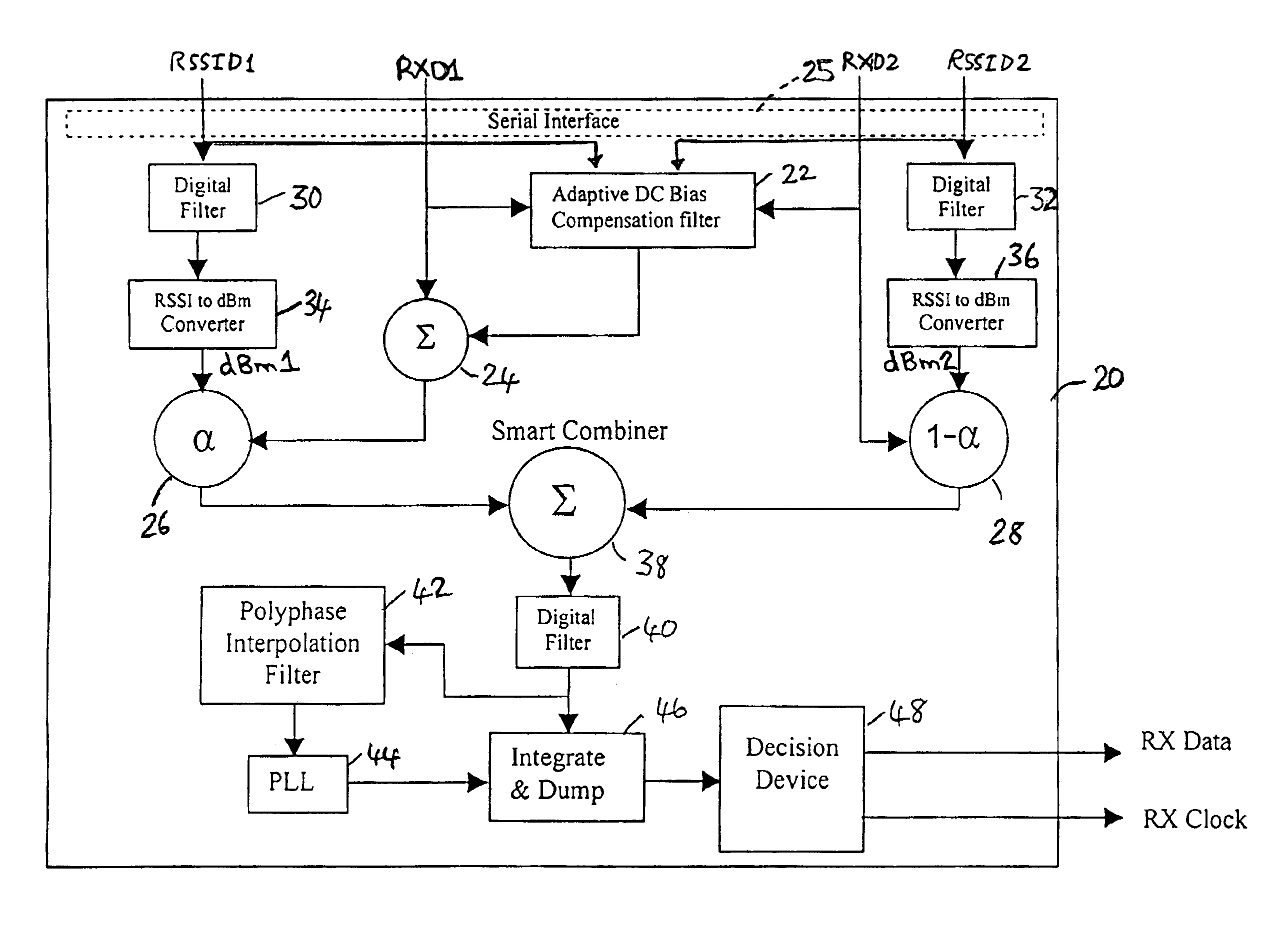Spatial diversity wireless communications (radio) receiver
a wireless communication and receiver technology, applied in the field of spatial diversity wireless communications (radio) receivers, can solve the problems of time domain distortion, cancellation or reinforcement, and the bandwidth of the bandwidth required by the regulatory agency to facilitate high speed data transmission
- Summary
- Abstract
- Description
- Claims
- Application Information
AI Technical Summary
Benefits of technology
Problems solved by technology
Method used
Image
Examples
Embodiment Construction
Referring to FIGS. 1 and 2, the receiving components shown therein may be identical, and the same reference numerals are used to refer to the same parts. Only the signals generated by the two receiving components are differentiated herein by being designated with the suffixes 1 and 2 respectively. While a wireless communications (radio) receiver utilising two receiving components with spaced apart antennas is described herein, it will be understood by persons skilled in the art that similar principles to those described below may be applied to implement the invention in receivers employing three or more receiving components with associated spaced apart antennas. The terms “radio” and “wireless communications” are intended to have the same meaning, and are used interchangeably, herein; they are not intended to be limited to any particular frequency range or modulation scheme.
The receiving components each comprise an antenna 2 and FM receiver 4 which in turn comprises a radio frequenc...
PUM
 Login to View More
Login to View More Abstract
Description
Claims
Application Information
 Login to View More
Login to View More - R&D
- Intellectual Property
- Life Sciences
- Materials
- Tech Scout
- Unparalleled Data Quality
- Higher Quality Content
- 60% Fewer Hallucinations
Browse by: Latest US Patents, China's latest patents, Technical Efficacy Thesaurus, Application Domain, Technology Topic, Popular Technical Reports.
© 2025 PatSnap. All rights reserved.Legal|Privacy policy|Modern Slavery Act Transparency Statement|Sitemap|About US| Contact US: help@patsnap.com



